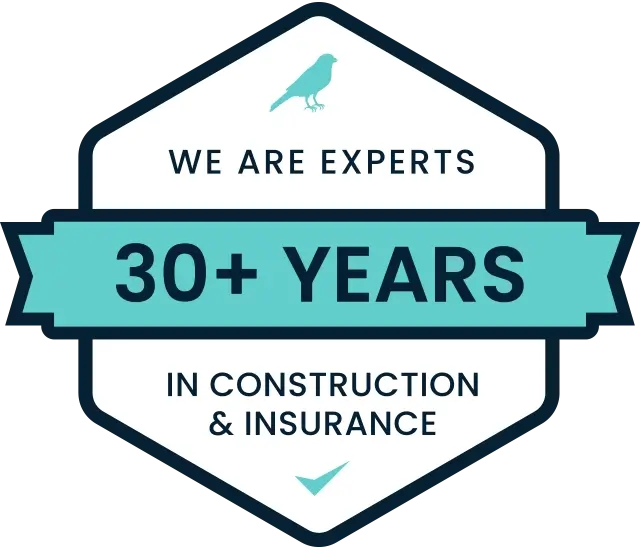Bringing Intelligence to the Quote: Front‑End Risk Assessment for Homeowners
The Cost of Getting the Quote Wrong
Every inaccurate quote creates downstream friction. Reprices frustrate agents and applicants. Post‑bind endorsements slow the journey to a stable in‑force policy. Early‑tenure losses erode confidence and margins. Many of these issues trace back to a first touch that relied on limited or outdated information about the actual property. When underwriters and product teams inject real condition data at the quote stage, the effects compound across the lifecycle: fewer surprises, cleaner decisions, and improved satisfaction.
Why Traditional Prefill Isn’t Enough
Traditional prefill improves speed but not always accuracy. It often captures structure details without reflecting current condition or recent changes. That leaves blind spots at the exact moment accuracy matters most.
Common misses include:
- New or unlisted features: pools, rooftop solar, EV charging stations, ADUs or detached structures.
- Condition changes: roof wear, siding deterioration, vegetation encroachment that affects defensible space.
- Recent improvements: roof replacements, electrical panel updates, appliance upgrades that could qualify for credits.
- Contextual hazards: proximity to coast or wind corridors, micro‑climate exposures.
These gaps lead to repricing and endorsements after inspection. Worse, they can push unnecessary inspections to low‑risk properties while missing high‑impact changes elsewhere.
What “Intelligence at Quote” Looks Like
Front‑end intelligence combines multiple inputs into a concise, decision‑ready snapshot that appears the moment an address is entered.
Condition‑based enrichment
- Detects visible roof condition and age signals.
- Identifies added or modified structures: pool enclosures, pergolas, detached garages, guest houses.
- Surfaces high‑value features: extensive glass, complex rooflines, specialty materials.
Contextual risk indicators
- Incorporates vegetation density and defensible space cues.
- Evaluates localized weather and hazard exposure.
- Accounts for distance to coastline and known wind or hail corridors.
Confidence scoring and next‑best action
- Scores the reliability of detected features.
- Suggests when to request a quick self‑inspection, photos, or an additional document.
- Routes only the right risks to a deeper review.
How Chrp Fits the Quote‑to‑Bind Workflow
Trigger: As the agent or applicant enters an address, an API call returns a near‑real‑time condition snapshot. Latency targets support interactive quoting.
Triage: Chrp flags risk‑relevant features and condition changes that underwriters care about. The system recommends actions such as endorsements, coverage terms, or a targeted self‑inspection when appropriate.
Underwriter assist: Outputs are saved to the policy file with timestamps, creating an audit‑ready trail that supports internal reviews, compliance checks, and reinsurance discussions.
Agent experience: With clearer information at the first quote, there are fewer callbacks and fewer surprises after inspection. Expectations are set early, which improves close rates and trust.
Use Cases Where Intelligence Pays Off
High‑net‑worth homes
Large or complex properties often include multiple structures, specialty materials, and custom features. Condition‑based enrichment helps align coverage and endorsements before bind and reduces contentious post‑inspection changes.
Coastal and wind‑exposed risks
Roof age and condition are central to eligibility and pricing. Detecting wear, materials, and roof geometry early helps place risks correctly and prevents later surprises.
Older housing stock
After certain age thresholds, the likelihood of condition‑driven hazards rises. Enrichment highlights aging roofs, outdated panels, or deteriorating elements that merit a closer look or credits if recently replaced. If you cite a specific threshold (for example “after N years”), mark it as illustrative unless sourced.
Renovations and additions
ADUs, detached garages, expanded decks, enclosed patios, and pool houses often go unreported at the quoting stage. Early detection enables accurate limits and endorsements, and prevents service friction.
Implementation Paths
Pilot for fast learning
Start with a portal overlay in one or two states or lines. Instrument the funnel to measure reprices, bind speed, underwriter touch time, and agent satisfaction. Define a short learning loop that updates routing rules within weeks.
Scale through APIs
Integrate enrichment into the rating engine and underwriting workbench. Use rules to route flagged quotes to next‑best actions such as self‑inspection requests or referral. Align with existing underwriting guidelines and authority levels.
Governance and controls
Adopt standard data privacy practices, role‑based access, and retention policies. Ensure change logs and artifacts are saved to the policy record for audit. Provide a clear model and rules management process so product and underwriting can evolve the signals over time.
Buyer FAQs and Objections
“Will this create more work?”
Intelligence at quote reduces total work by focusing attention on the risks that changed. Low‑risk quotes glide through while high‑impact cases receive targeted actions.
“What about data privacy?”
Chrp supports secure, role‑based workflows with logged access, documented outputs, and retention controls. The enrichment package is designed to fit within existing compliance and audit frameworks.
“Will agents like it?”
Agents prefer fewer callbacks and clearer expectations. Many report a better first‑quote experience when enrichment clarifies endorsements or inspection needs up front. You can include an anonymized survey line such as “Fewer reprices and a cleaner bind experience” in a pull‑quote box.
Conclusion
Bringing intelligence to the quote changes the trajectory of the entire policy lifecycle. When condition‑based enrichment and contextual risk signals appear at the first touch, underwriting decisions become cleaner, the bind process moves faster, and customers experience fewer surprises. Quote accuracy is not only a pricing goal; it is a service promise that builds trust with agents and applicants.

